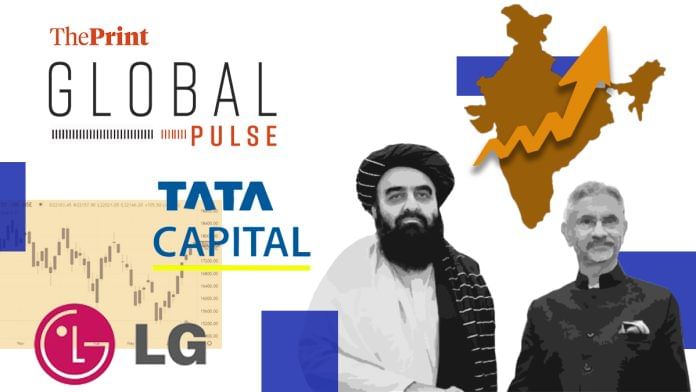New Delhi: The Narendra Modi government aspires for India to become a USD10 trillion economy by 2047, and a developed nation. But, as The Economist argues, “this should be a doddle.” Instead, India should focus on attaining a developed-world standard of living.
“The dollar value of India’s GDP in 2047 will depend on the value of its economy and the exchange rate between the rupee and the greenback. At today’s rates, India has a GDP of $4.2trn. Raising that to $30trn would mean growth of over 9% a year for the next 22 years,” says the magazine.
“That might sound difficult, but India ought to receive help from a real appreciation in its currency; as it gets richer, prices will converge with America’s, resulting in a bigger economy in future rupee terms, a dearer currency or both.”
The piece also looks at what constitutes a developed country.
“The World Bank aims for a national income per person of $14,000 before granting high-income status. This is an inflation-adjusted version of a line it drew in 1989 to include countries it thought ‘industrialised’. Another might be membership of the OECD, described by this newspaper as ‘a club of mostly rich countries’. Its poorest member is Colombia, with a GDP per person of $8,000,” says the article.
“Holding prices constant, a $10trn economy in 2047 would not be enough for India to be considered rich by either measure.”
Four years after the Taliban wrested power from the US-backed Afghanistan government, India is making its way back into the country’s orbit—holding high level talks amid Pakistan-Afghanistan border clashes, reports Mujib Mashal in the New York Times.
“The meeting in New Delhi between Amir Khan Muttaqi, Taliban’s foreign minister, and his Indian counterpart, S. Jaishankar, is the highest level engagement between the two sides in decades,” says the report. “Mr. Jaishankar said India was elevating its mission in Kabul to a full-fledged embassy. India’s embassy in Kabul had been shut in the 1990s when the Taliban first came to power, but has remained open during the past four years, albeit at a reduced capacity.”
“In a press engagement with Indian reporters, Mr. Muttaqi dodged a question on the Kabul explosion, but confirmed the airstrikes along the border in Paktika, calling it ‘a big mistake of the Pakistan government’,” says the report.
“We want good relations with Pakistan, just like we want with India,” Muttaqi has been quoted as saying. “But it has to be reciprocal, it can’t be one-sided.”
In the BBC, Anahita Sachdev looks at India’s booming art market. Even as global sales dip, the Indian art ecosystem continues to grow, says the BBC, positioning this as a reflection of a rise in the country’s base of “millionaire households”.
“Auctioneers and curators say India’s art market is witnessing an unprecedented boom, driven by a surge of art fairs, galleries, and exhibition spaces across cities and towns,” says the report. “Industry insiders estimate that the market is worth $338m, up exponentially from $2m at the turn of the century, and will expand to $1.1bn by 2030.”
“Mr Vazirani predicts the auction market could double last year’s earnings, driven by rising wealth in India and among the diaspora,” the report notes.
India is on its way to a “blockbuster” IPO month, report Krishn Kaushik, Chris Kay and William Sandlund in the Financial Times. Two major players –– Tata Capitals and LG Electronics are set to debut this week.
“Equities have recovered from an unexpectedly slow start to the year after Trump’s ‘liberation day’ tariffs in April and a brief military conflict with Pakistan in May raised concerns about the country’s economic growth,” says the report.
“IPOs are on track to overtake last year’s record of $21bn. Much of the activity has been concentrated in October as steady earnings and recent government vows to overhaul the goods and services tax have ‘boosted overall confidence in the primary market’, said Pranav Haridasan, chief executive of Axis Securities,” the report says.
(Edited by Ajeet Tiwari)






